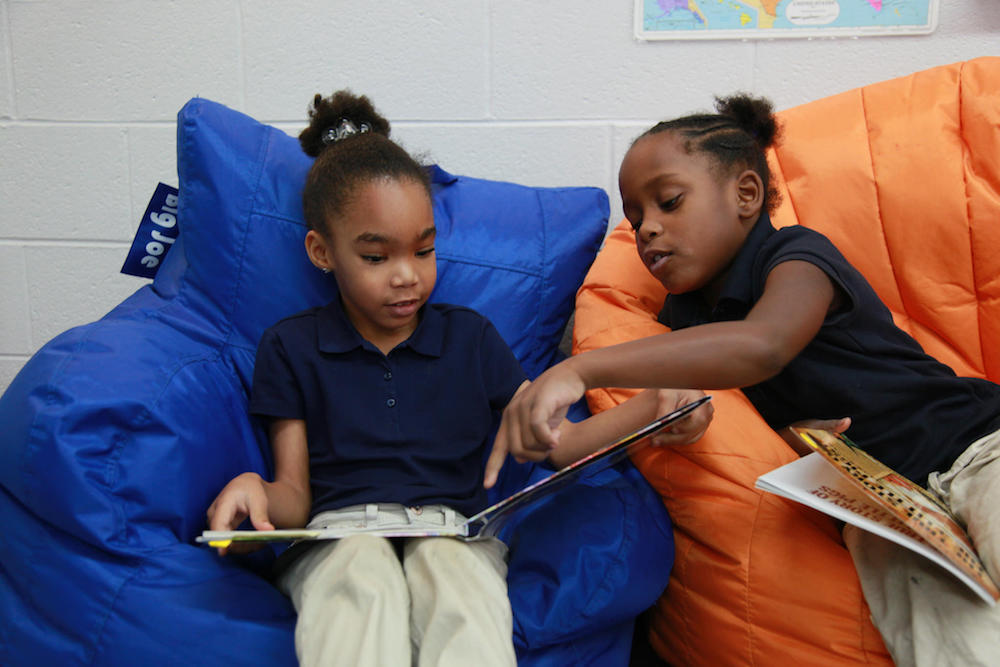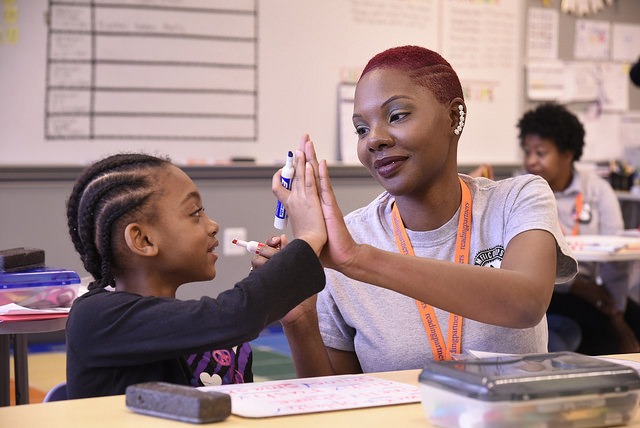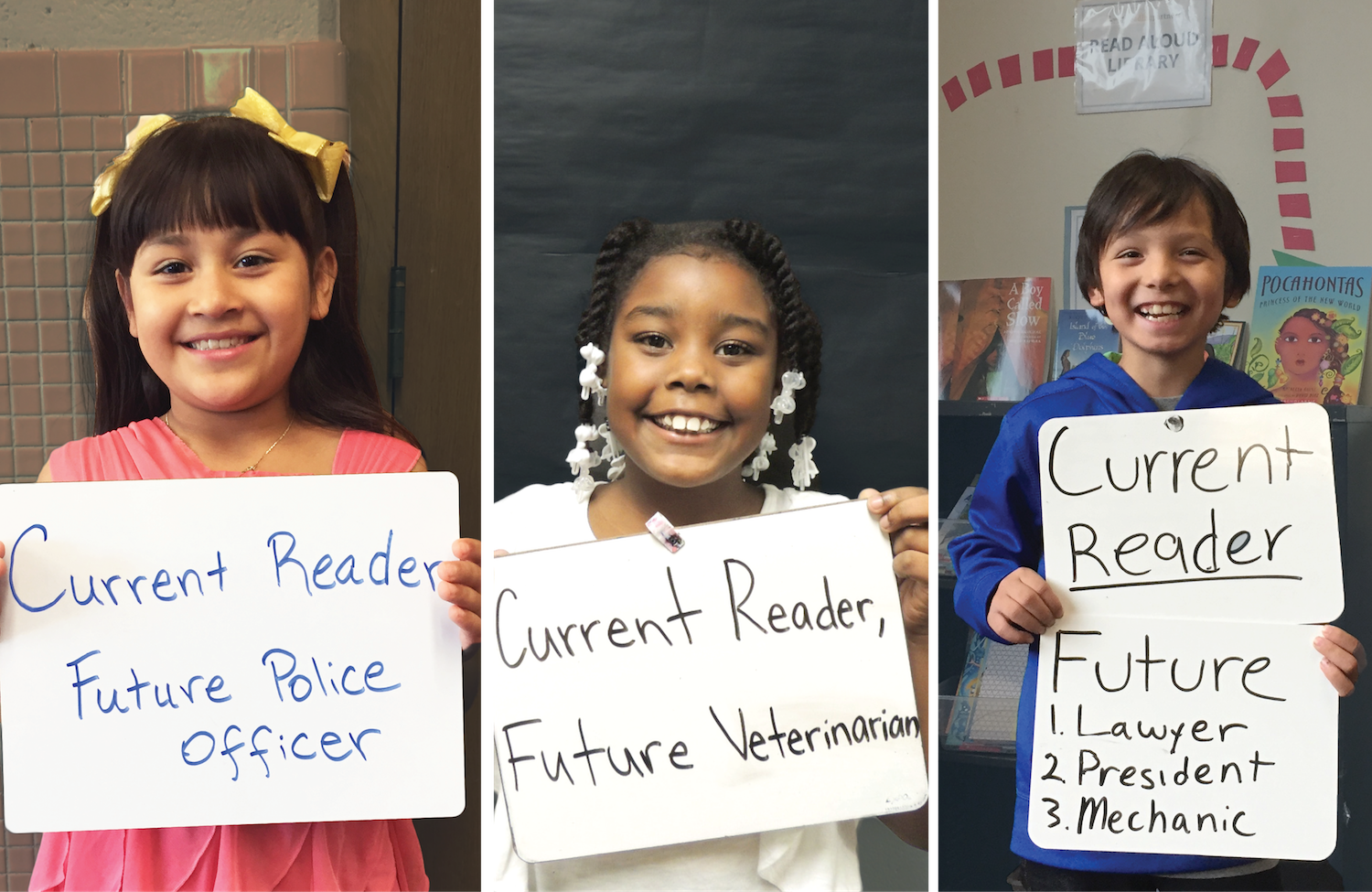June 6, 2017
Buzzwords explained: opportunity gap vs. achievement gap

Within the education community, certain buzzwords are used to describe and explain systematic variance in students’ growth and progress throughout their academic careers. Two terms commonly seen in the ed space are: the “opportunity gap” and the “achievement gap.”
The opportunity and achievement gaps are easily confused and often used interchangeably, which is problematic when attempting to identify and address the reasons why some students are falling behind.
In our line of work, and especially for our community/volunteer tutors, it is important to understand the difference between achievement and opportunity gaps, as well as how they work together to affect the growth and success of our students. So, let’s break down what these terms mean.
The difference between the gaps
An achievement gap “refers to any significant and persistent disparity in academic performance or educational attainment between different groups of students” (The Glossary of Education Reform, 2013). Achievement gaps can be understood globally, such as the United States’ declining standardized test scores in comparison to the scores of countries like China or Japan. The term can also be used more locally, such as African American students attending an under-resourced school in South Carolina who are struggling to read proficiently in comparison to their white or Asian peers who attend schools with more resources.
Reading Partners’ director of assessment, Rebecca Sutherland, thinks about the achievement gap in this way: “The achievement gap refers to two non-overlapping groups that should be expected to have similar outcomes, but do not. We wouldn’t talk about the achievement gap between kindergarteners and second graders because their outcomes are not expected to be the same.”
An opportunity gap can be defined as “the unequal or inequitable distribution of resources and opportunities,” (The Glossary of Education Reform, 2013).
The opportunity gap describes the ways in which the education playing field is not level for all students, even before the first day of class. Race/ethnicity, English proficiency, and other environmental factors all contribute to why individuals may face opportunity gaps throughout their lives, hindering them from achieving the same academic success as their peers.
The joint effect
While the terms “opportunity gap and “achievement gap” are used to describe two distinct effects, there are many ways in which they intersect for students in the real world.
Food scarcity is an example of an opportunity gap that low-income students may experience. A student may live in a low-income home where food scarcity is an issue. That student may not receive breakfast in the morning, or may go to bed without receiving dinner. He/she is expected to be at school and ready to learn, but have a hard time focusing when fatigued.
The National Education Association has identified that “missing meals and experiencing hunger impair children’s development and achievement.” Students who experience food scarcity are more likely to repeat a grade or miss school. This opportunity gap faced by many low-income students correlates with their achievement gap relative to their middle- and upper-income peers.
Forging a path forward
Activating communities to rally behind their most vulnerable students can be key to ensuring we begin to close these gaps. It’s no secret that students enrolled in programs like Reading Partners benefit tremendously from additional supports. And for students attending Reading Partners, the individualized attention is key. In the 2015-16 school year, more than 80 percent of our students met or exceeded their literacy growth goals.
Every time a child reaches grade-level reading proficiency, he/she becomes empowered to achieve at the same level as his/her grade-level peers. Thus, closing one achievement gap for that student and opening limitless new opportunities.
Former U.S. Secretary of Education John B. King Jr. emphasizes the need for more proven literacy instruction for kids. He says, “Reading is the most fundamental academic skill our children need to master to become successful in school and in life. Access to books and proven literacy instruction are critical to narrowing the achievement gap in education to help children thrive.”
At Reading Partners, more than 14,000 volunteer tutors are actively combating the opportunity and achievement gaps by empowering students through evidence-based literacy instruction. This powerful force of positive change inspires us, and we are grateful to all of our reading partners who envision a brighter future for all students regardless of the obstacles they may face. Fueled by thousands of community tutors, Reading Partners is actively combatting the opportunity gaps faced by more than 11,000 students nationwide. And in so doing, long-persistent achievement gaps are diminishing as student potential ascends.












